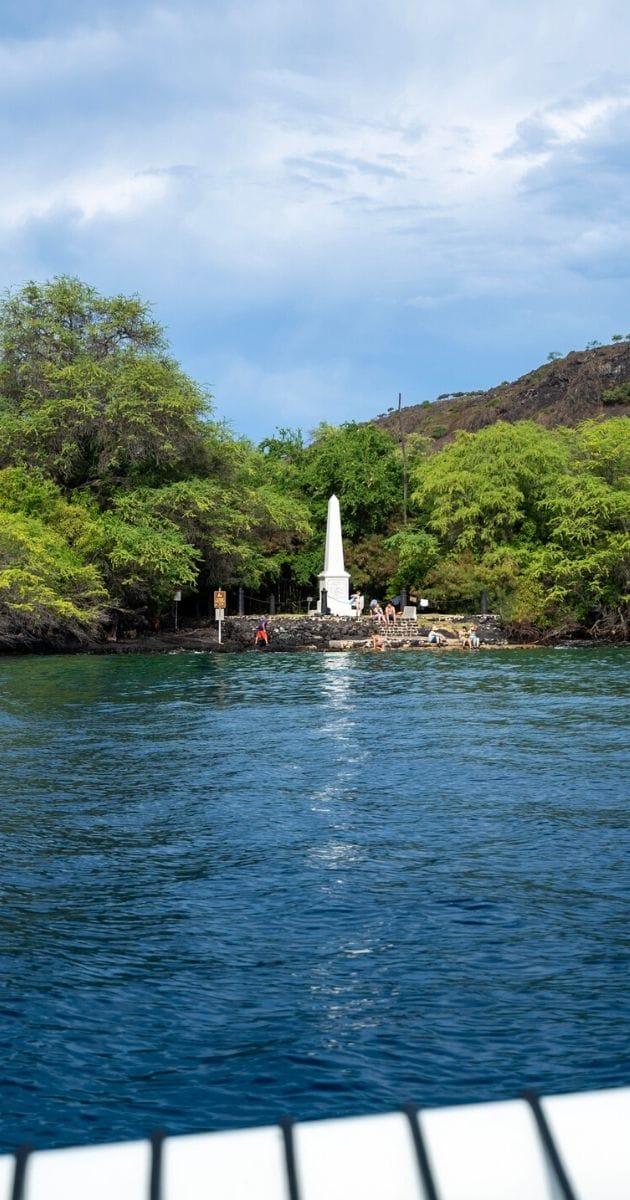Here’s an interesting article on the Captain Cook Monument by Hawaii.com. Sea Paradise Sailing and Snorkel offers a morning snorkel tour in Kealakekua Bay near the Captain Cook Monument which is considered one of the best snorkeling spots on the island of Hawaii.
British Sea Captain James Cook, thought to be the first Westerner to set sight on the Hawaiian Islands, spotted the islands of Oʻahu and Kauaʻi on Jan. 18, 1778. Two days later, he anchored in Waimea Bay off Kauaʻi.
The Death of Captain Cook
Almost a year later on Jan. 17, 1779, the explorer found his way to the Big Island, where he would be killed at the hands of Hawaiians. He anchored his ships in the sheltered waters of Kealakekua Bay where the annual Makahiki Festival, which honors the fertility god Lono, was in progress. Thinking Cook might be Lono himself, the Hawaiians welcomed him with open arms and honored him with a great feast.
On Feb. 4, Captain Cook left the Big Island only to return about a week later after a severe storm damaged one of his ships. This time the Hawaiians, who had discovered Cook was not a god, were hostile. A skirmish broke out and Cook with four of his sailors died near the village of Kaʻawaloa. In 1874, Cook’s fellow countrymen erected a 27-foot obelisk in his memory.
Now a Popular Snorkeling Location
Today the site is a popular location for snorkeling due to its clear and calm conditions. Dolphins, manta rays and tropical fish are commonly seen in these waters.















